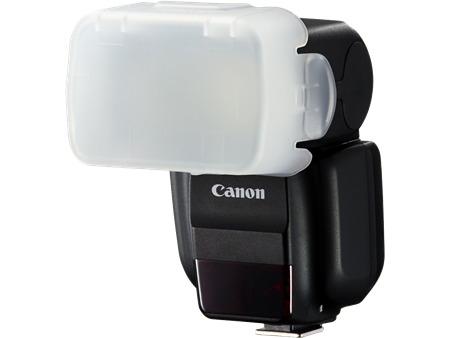Controlling Light and Wind with High-Speed Sync (HSS) Flash
 |
| Canon Speedlite 430EX III-RT with Diffuser |
Outside close-up and macro photography is generally done on an early windless morning with crisp light / or with some cloud cover for reducing harsh light and glare.
But, what do you do if you only have 14:00 in full afternoon sun and the wind is blowing? Suddenly a high shutter speed and using flash is more than a suitable solution.
I went out at 14:00 in the sun for deliberately capturing a yellow (and very bright) flower against (my own) close-up and macro photography principles.
In using a Speedlite (external flash unit) fitted in the camera flash hot shoe and applying the Speedlite's High-Sync Speed (HSS) setting I was able to overcome the maximum sync speed (highest shutter speed of a particular camera when using flash) of the camera I was using - 1/250s on the Canon EOS 70D - by setting the shutter speed to whatever I wanted higher than the 1/250s limitation.
Most entry-level DSLR's are capable of 1/4000s Shutter Speed and enthusiast / professional cameras up to 1/8000s.
For this image I experimented (handheld) and went up to the maximum (almost unthinkable) shutter speed of 1/8000s of said camera - maybe a stop or two too high of what was actually required, but nevertheless, together with the flash, overpowered the sun and stopped the plucky wind from moving the flower from side to side.
One of the applications of HSS is to be able to use wide apertures with faster shutter speeds for limiting the available ambient light (i.e. sunlight in this case). The faster the shutter speed the more the ambient light limitation. HSS is only available to use with either the camera's pop-up flash or with an external Speedlite flash.
In early morning close-up and macro photography (outside) I will use Aperture Priority Mode at whatever aperture is required (by me) and hardly be bothered with the shutter speed - and most often without flash.
Settings for this experimental image: Manual Mode @ ISO 400 / f/5.6 / 1/8000s with Canon EOS 70D / Speedlite 430EX III-RT with stofen-type plastic diffuser (flash head +- 35% tilted upwards from default position).
Lens used: Canon EF 70-300mm f/4-5.6L IS USM lens
Speedlite Mode: E-TTL (with no exposure compensation)
Image is uncropped and slightly processed in Adobe Lightroom Classic CC 9.
Using flash is therefore not only for adding light to low ambient light conditions, but also for limiting / overpowering strong sun light.
Butterfly in the afternoon at 1/180s Sync Speed
But, what do you do if you only have 14:00 in full afternoon sun and the wind is blowing? Suddenly a high shutter speed and using flash is more than a suitable solution.
I went out at 14:00 in the sun for deliberately capturing a yellow (and very bright) flower against (my own) close-up and macro photography principles.
In using a Speedlite (external flash unit) fitted in the camera flash hot shoe and applying the Speedlite's High-Sync Speed (HSS) setting I was able to overcome the maximum sync speed (highest shutter speed of a particular camera when using flash) of the camera I was using - 1/250s on the Canon EOS 70D - by setting the shutter speed to whatever I wanted higher than the 1/250s limitation.
Most entry-level DSLR's are capable of 1/4000s Shutter Speed and enthusiast / professional cameras up to 1/8000s.
What is High Synch Speed (HSS) Flash?
"High sync speed in flash photography refers to the ability of a camera and flash system to synchronize at faster shutter speeds. In traditional flash photography, the shutter speed is limited by the camera's flash sync speed, which is usually around 1/200 to 1/250 seconds for many cameras.
When you exceed the maximum sync speed and try to use a faster shutter speed, you may encounter issues like part of the image being dark due to the shutter not being fully open when the flash fires. This limitation can be a challenge, especially when shooting in bright conditions and wanting to use a wider aperture to control depth of field.
High-speed sync (HSS) or HyperSync technology is a solution to this problem. It allows you to use faster shutter speeds, such as 1/1000 or even 1/8000 seconds, while still using flash. This is achieved by pulsing the flash multiple times during the exposure. The technology varies between manufacturers, and the terms used might differ (e.g., High-Speed Sync for Canon, HyperSync for PocketWizard).
Here are some key points about high sync speed flash:
If you're interested in high sync speed flash photography, it's recommended to check your camera and flash system's compatibility and explore the specific features and limitations of the high-speed sync technology available with your equipment." (Source: ChatGPT 2023)
"High sync speed in flash photography refers to the ability of a camera and flash system to synchronize at faster shutter speeds. In traditional flash photography, the shutter speed is limited by the camera's flash sync speed, which is usually around 1/200 to 1/250 seconds for many cameras.
When you exceed the maximum sync speed and try to use a faster shutter speed, you may encounter issues like part of the image being dark due to the shutter not being fully open when the flash fires. This limitation can be a challenge, especially when shooting in bright conditions and wanting to use a wider aperture to control depth of field.
High-speed sync (HSS) or HyperSync technology is a solution to this problem. It allows you to use faster shutter speeds, such as 1/1000 or even 1/8000 seconds, while still using flash. This is achieved by pulsing the flash multiple times during the exposure. The technology varies between manufacturers, and the terms used might differ (e.g., High-Speed Sync for Canon, HyperSync for PocketWizard).
Here are some key points about high sync speed flash:
- Faster Shutter Speeds: With HSS, you can use shutter speeds beyond the traditional sync speed, which is beneficial in situations where you need to freeze fast action or shoot with wider apertures in bright conditions.
- Continuous Light Output: High-speed sync works by pulsing the flash multiple times during the exposure. This allows for more even illumination across the frame, but it can reduce the flash's effective power, so you might need to be closer to your subject or use more powerful flashes in certain situations.
- Compatibility: High-speed sync may require both a compatible camera and flash unit. Not all camera and flash combinations support HSS, so it's important to check compatibility before investing in such a system.
- Trade-offs: While HSS is a valuable tool, it does have some trade-offs. The flash may have reduced power compared to non-HSS mode, and the technique may introduce some challenges in controlling ambient light.
If you're interested in high sync speed flash photography, it's recommended to check your camera and flash system's compatibility and explore the specific features and limitations of the high-speed sync technology available with your equipment." (Source: ChatGPT 2023)
Vernon Chalmers Photography High Speed Synch (HSS) Speedlite Flash Photography
 |
| Overpowering the sun / wind with High-Speed HSS @ 1/8000s Shutter Speed |
For this image I experimented (handheld) and went up to the maximum (almost unthinkable) shutter speed of 1/8000s of said camera - maybe a stop or two too high of what was actually required, but nevertheless, together with the flash, overpowered the sun and stopped the plucky wind from moving the flower from side to side.
One of the applications of HSS is to be able to use wide apertures with faster shutter speeds for limiting the available ambient light (i.e. sunlight in this case). The faster the shutter speed the more the ambient light limitation. HSS is only available to use with either the camera's pop-up flash or with an external Speedlite flash.
In early morning close-up and macro photography (outside) I will use Aperture Priority Mode at whatever aperture is required (by me) and hardly be bothered with the shutter speed - and most often without flash.
Settings for this experimental image: Manual Mode @ ISO 400 / f/5.6 / 1/8000s with Canon EOS 70D / Speedlite 430EX III-RT with stofen-type plastic diffuser (flash head +- 35% tilted upwards from default position).
Lens used: Canon EF 70-300mm f/4-5.6L IS USM lens
Speedlite Mode: E-TTL (with no exposure compensation)
Image is uncropped and slightly processed in Adobe Lightroom Classic CC 9.
Using flash is therefore not only for adding light to low ambient light conditions, but also for limiting / overpowering strong sun light.
Butterfly in the afternoon at 1/180s Sync Speed